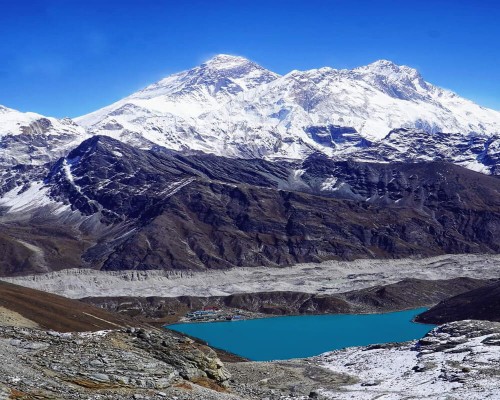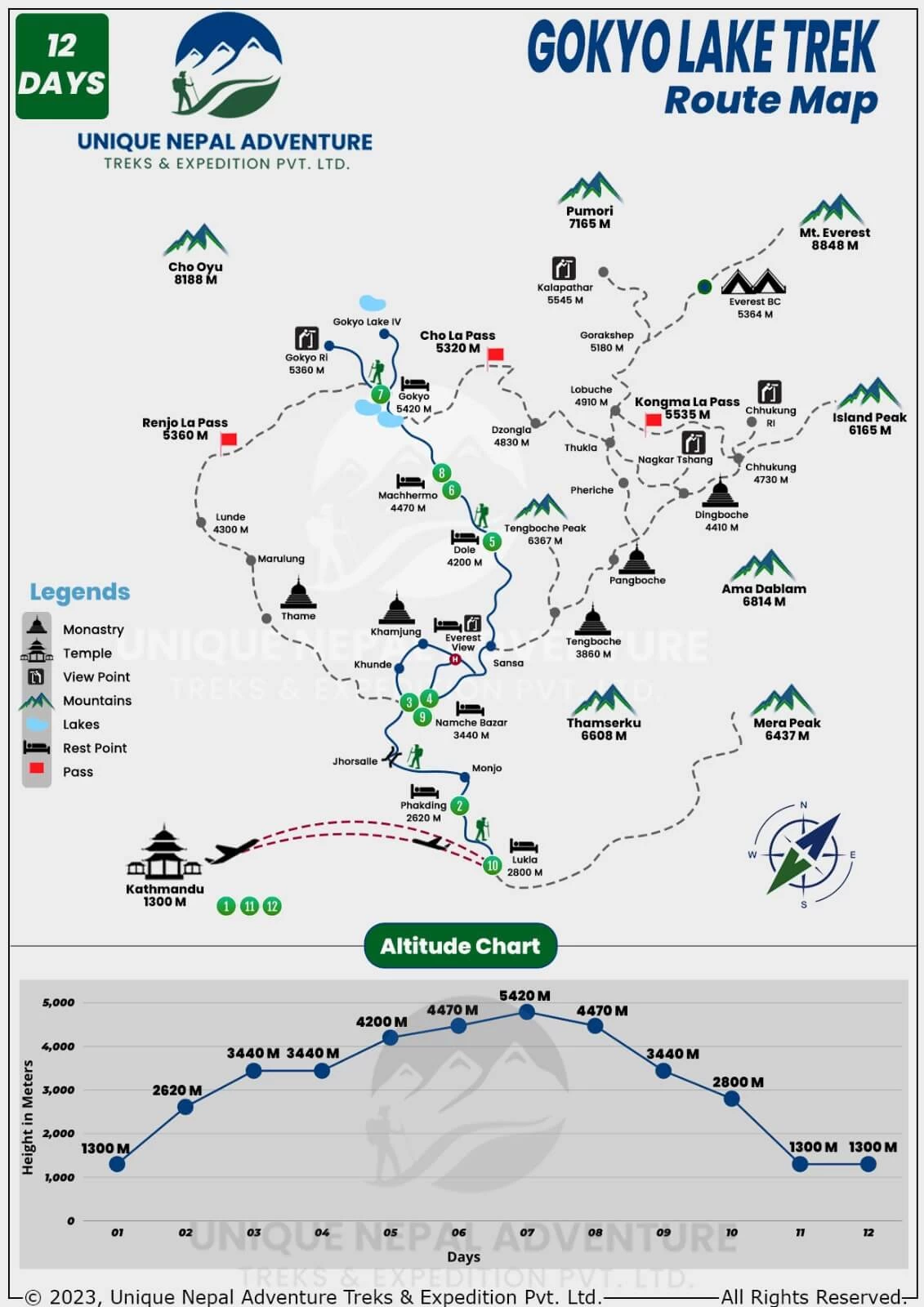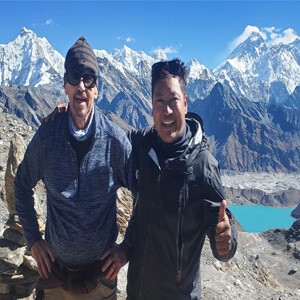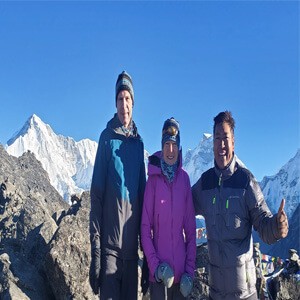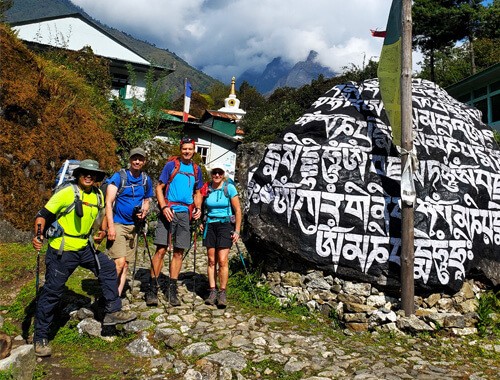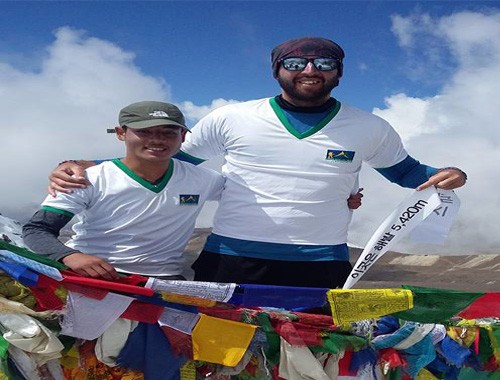Overview of Gokyo Lake Trek
Gokyo Lake is home to five stunning lakes, each more beautiful than the last, with the campsite located near the third lake. Situated close to Everest Base Camp, it offers breathtaking views of iconic peaks like Mount Everest, Lhotse, Makalu, Cho Oyu, and many other snow-capped summits from the Gokyo Ri viewpoint (5360 m).
The trek showcases the untouched beauty of the Ngozumpa Glacier and the unique lifestyle, culture, and traditions of the Sherpa people. Along the way, you'll cross picturesque villages and suspension bridges and encounter wildlife such as yaks, mountain goats, musk deer, birds, and vibrant flora. It’s a journey that immerses you in both the natural wonders and rich culture of the Himalayas.
The Gokyo Lake Trek offers stunning views of Everest, Lhotse, and Cho Oyu from Gokyo Ri. It features five lakes, the Ngozumpa Glacier, and scenic Sherpa villages. Along the way, you'll encounter wildlife like yaks and musk deer. This trek combines breathtaking landscapes with rich cultural experiences in the Himalayas.
The Gokyo Valley Trek begins with your arrival at Kathmandu Airport, followed by an overnight stay at a hotel in Kathmandu. The next day, you’ll take a 35-minute flight on a 19-seat Dornier aircraft to Lukla, the starting point of your trek. From there, you'll trek for 4–5 hours along the Dudh Koshi River to reach the beautiful village of Phakding.
On Day 2, you'll trek to Namche Bazaar, the capital of the Khumbu Valley, located at an altitude of 3,440 meters. Before reaching Namche, you'll pass through Monjo village, which serves as the entry gate to the Khumbu region, where you'll check in at a permit post. You’ll need to obtain both a Sagarmatha National Park Entry Permit and a Pasang Lhamu Rural Municipality permit. To get to Namche, you’ll cross the longest and deepest suspension bridge and then ascend for a couple of hours—a great preparation for climbing Gokyo Ri.
We recommend taking a rest day in Namche Bazaar for acclimatization. During this time, you can explore the nearby Khumjung Khunde village or visit the Everest View Hotel to catch stunning views of Mt. Everest, Ama Dablam, Thamserku, and more. Namche Bazaar also offers several bakery cafés, trekking shops, and pubs where you can relax with a drink.
The trek continues towards Gokyo Lake, passing through Dole and Machhermo and ultimately reaching Gokyo Ri (5,360 meters), where you’ll enjoy thrilling views of Mt. Everest (8,848 meters), Mt. Cho Oyu, lakes, and glaciers. The Sherpa people, known for their rich culture and strong religious beliefs, are primarily Buddhist. Throughout the villages, you'll find numerous Buddhist monuments, such as stupas, mani walls, and monasteries.
The trek offers breathtaking views from Gokyo Ri and Gokyo Lake, with options to either retrace your steps or take alternate routes over Renjo La Pass (5360 m), Thame Valley, or Cho La Pass (5420 m), visiting Everest Base Camp. It's a 12-day journey combining natural beauty and rich culture. We offer excellent services and can customize your trip to suit your needs.
How about lodging and food on the Gokyo Lake Trek?
There are well-managed lodges with comfortable rooms and neat and clean beds. They provide organic, hygienic food with warm hospitality. They respect tourists and are very friendly.
Cost of Gokyo Lake Trek
The Gokyo Lake trek costs US$1195 per person for a full board package from arrival to departure. You need a minimum of 2 people in a group. If you are a single visitor, the price will be slightly more. Even if you book Kathmandu Hotel, the price would be $35 less each. Feel free.
People, culture, customs, and religion in the Gokyo Trek
Most of the people are Sherpa; a few are Rai. They have their own culture, traditions, customs, language, and dress. They have many festivals and celebrate them in their own style. Furthermore, they are very religious about Buddhism. There are many Buddhist monuments, such as monasteries, Mani walls, prayer wheels, stupas, and Tsortens. Sherpas are very rich in cultures and religions.
Wildlife, flora, and fauna in the Everest region
It is a beautiful wilderness. There is no dense forest and little vegetation up to 4000 m. We can see many kinds of wild animals, such as yaks, mountain goats, blue sheep, deer, musk deer, and some national birds, such as Danfe and Monal (Lophophorus).
Attractions: Mountain View from Gokyo Ri (5360 m/17585 ft)
Thrilling viewing of white snow peaks, as mentioned below.
- Mt. Everest, 8848 m/29029 ft.
- Lhotse 8516 m/27940 ft.
- Cho Oyu 8201m / 26907ft
- Nupse Sar: 7861 m / 25790 ft.
- Peak 38: 7590 m / 24902 ft.
- Ama Dablam 6812 m / 22350 ft.
- Thamserku 6608 m / 21680 ft.
- Taboche Peak, 6495 m / 21310 ft.
- Cholatse Peak, 6640 m / 21785 ft.
- Kongde Peak, 6187 m / 20299 ft.
Lakes and Rivers in the Gokyo Trek
There are 5 Gokyo lakes, a huge Ngazumpa glacier, and the Dudhkoshi River.
Crossing popular villages in the Gokyo Lake Trekking
Here are many popular villages to cross: Lukla, Phakding, Monjo, Namche Bazaar, Khumjung, Dole, Machhermo, and Gokyo. All the village residents are very friendly, and they respect tourists.
How about transportation to get to the Gokyo Lake Trek?
Most people travel from Kathmandu to Lukla and return from Lukla to Kathmandu by flight. It is a 35-minute flight, but there are vehicle services as well. It is a longer, off-road drive. You can go by sharing a local public jeep or a local bus. If you would like to take a private jeep, it is possible via Phaplu, Nunthala, Kharikhola, and Bupsa. The best option is a flight. We arrange it according to your preferences. Please feel free to thank me.
When is the best time to visit the Gokyo Lake Trek?
The best time to visit Gokyo Lake is during autumn (September to December) and spring (March to May), when the weather is clear, temperatures are mild, and mountain views are stunning.
While winter (cold and snowy) and monsoon (rainy and cloudy) are less ideal, trekking is still possible. We ensure a safe and successful trip, even in these seasons.
- Autumn Season: September, October, November, and December.
- Winter Season: Late December, January, and February.
- Spring Season: March, April, and May.
- Monsoon Season: June, July, and August.
Do We Need Any Permits for the Gokyo Lake Trek?
To trek in Gokyo Valley, you need permits for Sagarmatha National Park. Checkpoints in Lukla and Monjo will verify them. We’ll help arrange everything, and our guide will return the permits at the end.
- Sagarmatha National Park Entry fees Nrs. 3000/-
- Khumbu Pasang Lhamu Rural Municipality Nrs. 2000/-
- TIMS (Trekking Information Management System) Nrs. 1000/

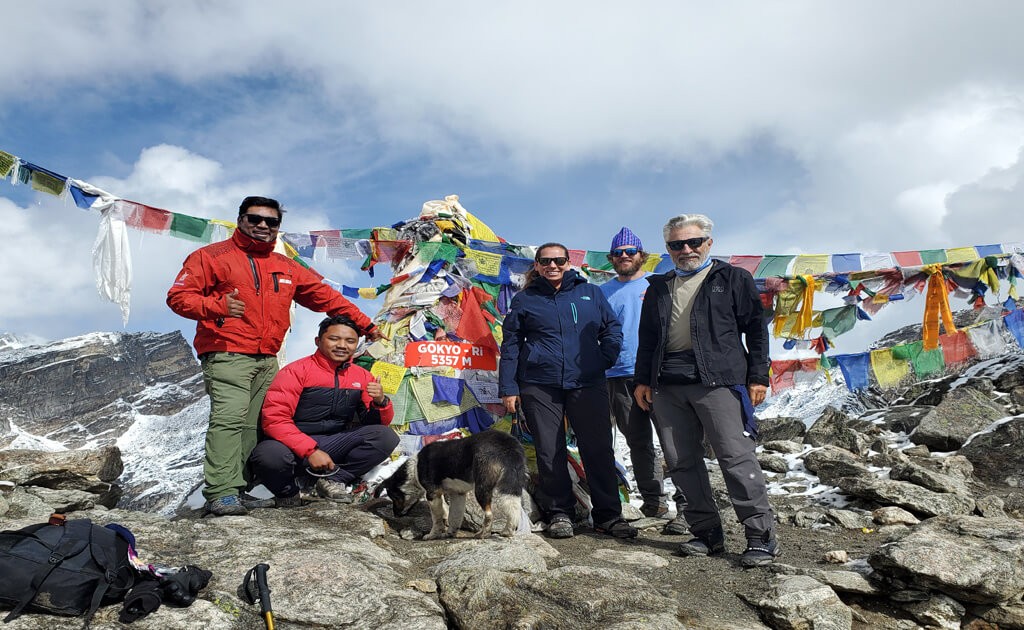
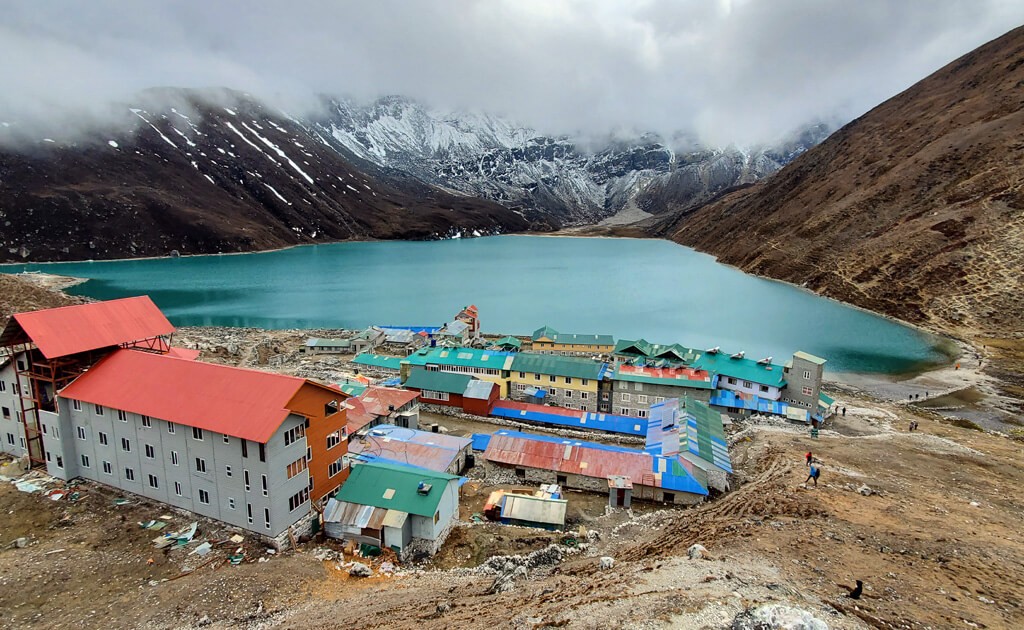


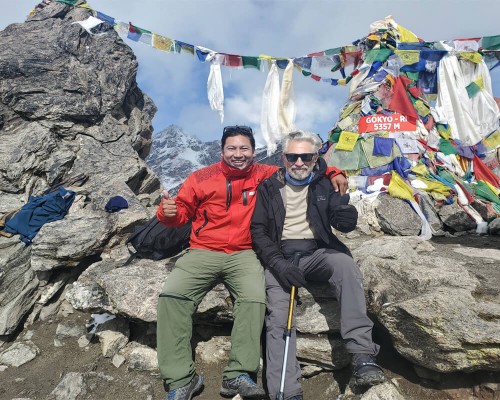
.jpg)
